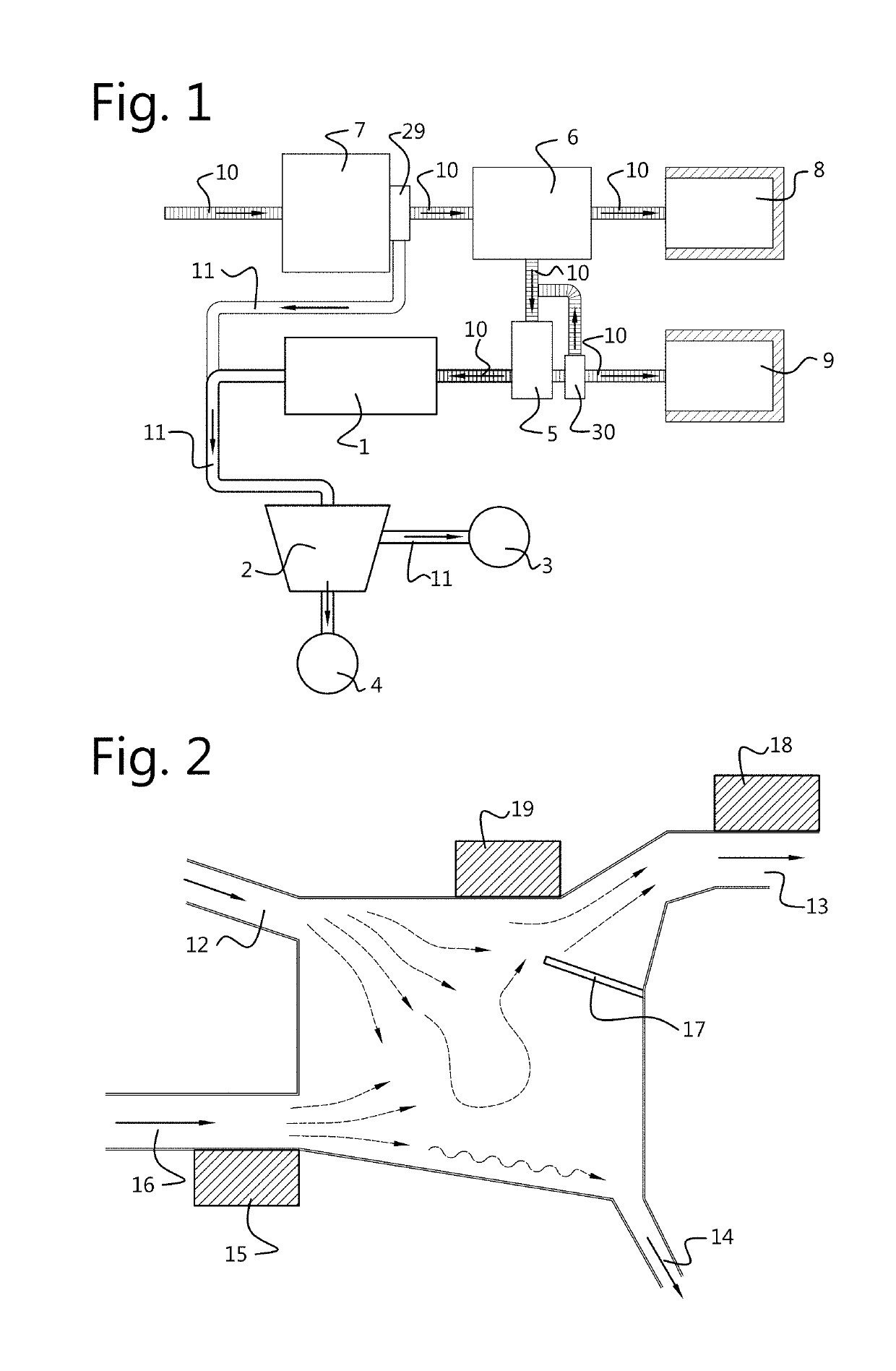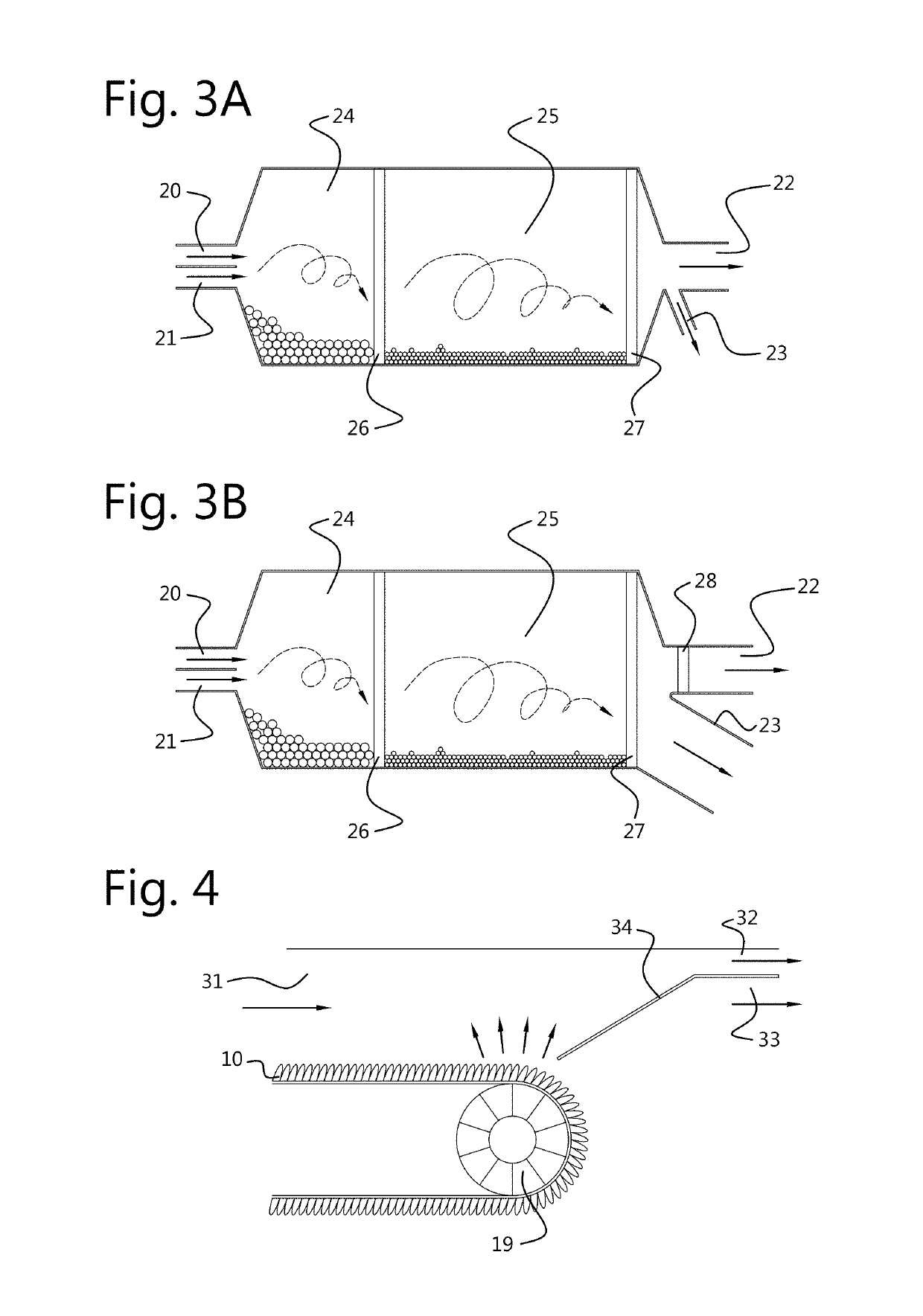Method for separation of coating from coated glass waste and apparatus suitable for this purpose
a technology of coating and glass waste, which is applied in the direction of magnetic separation, solid separation, gas current separation, etc., can solve the problems of contaminating ground water, affecting the separation efficiency of glass waste, and posing a substantial environmental risk when the coating is removed, so as to achieve efficient separation
- Summary
- Abstract
- Description
- Claims
- Application Information
AI Technical Summary
Benefits of technology
Problems solved by technology
Method used
Image
Examples
example
[0050]Separating and Isolating a Glass and a Lead Fraction Out of a Discarded CRT Television.
[0051]The example is explained referring to a CRT recycling plant as schematically shown in FIG. 1.
[0052]A discarded CRT television is delivered to a CRT recycling plant. This CRT television is a complex device that has to undergo some manual steps before supplying it to the fully automated CRT recycling process. These manual steps comprise removal of the plastic housing from the device and removal of the main electrical wiring parts. The CRT tube, still containing some metal and plastic elements that are more difficult to remove, is now supplied to the CRT recycling plant by putting it on the first conveyor belt. The CRT tube is carried into a crusher unit where the CRT rube is crushed in smaller parts. CRT glass dust, which can originate from the crushing step, is extracted by a dust extraction system. The resulting parts of the crushing step are not particularly small, however small enoug...
PUM
 Login to View More
Login to View More Abstract
Description
Claims
Application Information
 Login to View More
Login to View More - R&D
- Intellectual Property
- Life Sciences
- Materials
- Tech Scout
- Unparalleled Data Quality
- Higher Quality Content
- 60% Fewer Hallucinations
Browse by: Latest US Patents, China's latest patents, Technical Efficacy Thesaurus, Application Domain, Technology Topic, Popular Technical Reports.
© 2025 PatSnap. All rights reserved.Legal|Privacy policy|Modern Slavery Act Transparency Statement|Sitemap|About US| Contact US: help@patsnap.com


